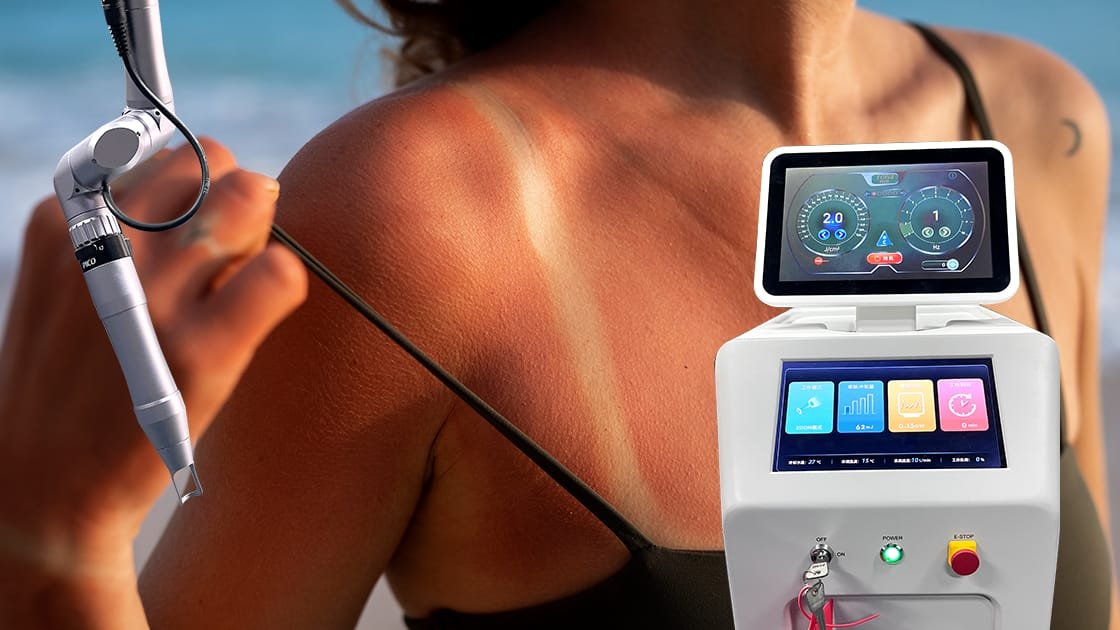As summer draws to a close, many of us are left with the remnants of sunburn—red, peeling skin that can be painful and damaging. Sunburn occurs when skin is overexposed to ultraviolet (UV) rays, leading to inflammation and long-term issues such as premature aging and skin cancer. Understanding the damage caused by sunburn is crucial for effective recovery, and TitanPico laser for sunburn recovery offers a promising solution.
The Summer Sunburn Dilemma: Understanding the Damage
When the skin is exposed to the sun’s harmful UV rays, it reacts by producing melanin, which can lead to tanning in mild cases or sunburn in severe cases. Immediate effects include redness, swelling, and discomfort. Over time, repeated sun exposure can result in dark spots, wrinkles, and even more serious conditions like skin cancer. Therefore, finding a reliable solution for reversing this damage is crucial, and that’s where TitanPico laser for sunburn recovery comes in.
TitanPico Laser Unveiled: A Breakthrough in Skin Recovery
The TitanPico laser for sunburn recovery is a state-of-the-art treatment designed to facilitate skin recovery from sun damage. This innovative laser combines two wavelengths—1064 nm and 532 nm—to target various skin issues, making it exceptionally effective for treating sunburn. Unlike traditional lasers, TitanPico delivers energy in rapid pulses, minimizing discomfort and downtime. This breakthrough technology not only addresses pigmentation but also stimulates collagen production, promoting overall skin rejuvenation.
How TitanPico Laser Reverses Sun Damage
The TitanPico laser for sunburn recovery targets the deeper layers of skin, focusing on the dermis where sun damage manifests. The laser’s energy penetrates the skin, breaking down damaged pigmentation, such as sunspots and redness, while stimulating the body’s natural healing response. This process encourages the production of new collagen and elastin fibers, essential for maintaining youthful, resilient skin. Patients typically experience a reduction in redness, improvement in skin texture, and a more even skin tone. Many report smoother, more radiant skin after just one to three sessions, with optimal results visible within weeks.
Preparing for Treatment: What You Need to Know
Before undergoing treatment with the TitanPico laser for sunburn recovery, it’s essential to consult with a qualified skincare professional to assess your skin type and sun damage level. During your appointment, they will discuss your goals and create a personalized treatment plan. On the day of treatment, your skin will be cleansed, and a topical anesthetic may be applied for comfort. The procedure typically lasts 30 to 60 minutes, depending on the treated area. After treatment, you may experience mild redness or swelling, but these symptoms usually subside quickly. Proper aftercare, including sunscreen application and hydration, will enhance results and protect your skin.
Transformative Journeys: Real Experiences with TitanPico Laser
Many individuals have shared their success stories after using the TitanPico laser for sunburn recovery. For instance, Sarah, an avid beachgoer, noticed significant improvement in her skin’s texture and tone after just three sessions. She remarked on how her skin felt rejuvenated and looked more vibrant. Another patient, Mark, experienced rapid healing of stubborn sunspots that had lingered for years. His transformation has not only boosted his confidence but also encouraged him to adopt better sun protection habits.
In conclusion, the TitanPico laser for sunburn recovery offers a revolutionary approach to banishing summer sunburn and revitalizing your skin. By understanding the damage caused by sun exposure and exploring effective treatments, you can achieve a healthier, more radiant complexion. If you’re ready to transform your skin and say goodbye to the effects of sunburn, the TitanPico laser may be the solution you’ve been seeking.








